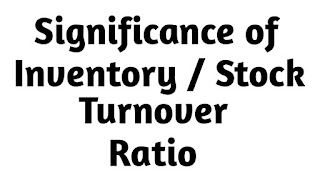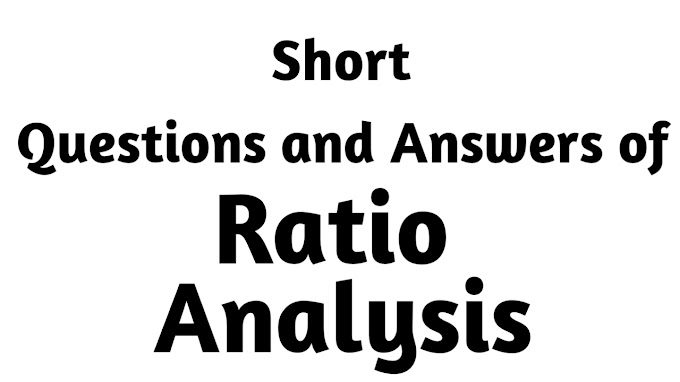Activity Ratios
Generally, activity means a particular direction in which a business
applies its efforts, e.g., a business may have a trading activity or a
manufacture activity. In accounting, activity is a measure of the general level
of business. Thus a firm with a small turnover may be said to be operating at a
low level activity.
Activity ratios show the degree of assets utilisation of a business.
Activity are the ratios of the cash elasticity of current assets, i.e., how
quickly various current assets are converted into sales and cash. Current
assets normally comprise cash, debtors and stock. A firm’s ability to meet
current liability largely depends upon the rate at which cash flows into the
business from current operations. Since sales are the critical event in this respect,
the rate at which stock are sold or debtors settle their accounts are very
crucial. Thus, it is necessary to evaluate the activity of specified current
assets like stock, debtors and also total assets. The important activity ratios
are as under:
Inventory / Stock Turnover Ratio

Inventory / Stock Turnover Ratio
Meaning
of inventory / stock turnover ratio: This is the ratio between the
stock of finished goods and the cost of goods sold (we have to take the cost of
goods sold, not the sales figures itself, so that both figures are expressed in
the same method of valuation – cost). The stock turnover ratio measures how
quickly stock is sold, i.e., the number of time a company’s stock turnover
during a year.
Formula of Inventory / Stock Turnover Ratio = Cost of goods sold/Average
Stock = Number of times
Notes:
(1) Cost of goods sold
= Sales – Gross Profit
OR
Cost of goods sold = Opening Stock + Purchase + Carriage Inwards +
Direct Expenses – Closing Stock
(2) When both sales
and stock fluctuate widely from month to month, a misleading ratio cloud result
from companies year and stock with the cost of goods sold. One solution would
be to use an average stock. Average stock is calculated as follows:
Method 1 Average Stock = Opening Stock + Closing Stock/2
Method 2 Average Stock = Total of Monthly Stocks/12
(The information to calculated average stock by the method 2 is rarely
available in examination questions. Therefore, it is better to follow method
1.)
Significance of inventory / stock turnover ratio
 |
| Significance of Inventory / Stock Turnover Ratio |
Other things remaining the
same, a high stock turnover ratio indicates a low level of stock and that
increase profit. A low stock turnover ratio is an indication of the maintenance
of a very high level of stock and, in effect, the business will face the
problems of over-stocking. However, the nature of a company’s business
obviously affects its speed of stock turnover. For Example, a supermarket
can move its stock faster than a car dealer.
Debtors Turnover Ratio
Meaning
of debtors turnover ratio: This is the ratio between credit sales (if the
information in regarding to credit sales is not available, total sales may be
taken in credit sales) and average debtors plus
average bills receivable. This ratio indicates the numbers of times per
year that the average balances of debtors are collected.
Formula of Debtors Turnover Ratio = Credit Sales/Average Debtors +
Average Bills Receivable
= Number of Times Debtors Collected each year
Significance of debtors turnover ratio
 |
| Significance of Debtors Turnover Ratio |
A high debtors turnover ratio may indicates an
improvement in business conditions, a tightening of credit policies, or
improved collection procedures. A low ratio may be indication of long credit
period or slow realisation from debtors.
Debtor Collection Period
It provides a rough approximation of the average time that it takes to
collect debtors. It is computed by dividing 365/12 by the number of debtors
turnover. It is determined as follows:
Debt Collection Period =
365/Debtors’ Turnover = Number of Days
Debt Collection Period = 12/Debtors’ Turnover = Number of Months
The debtors turnover ratio and debt collection period are often use to
measure a business’s ability to meet short term obligation and measure the
strength of the business’s current operation. In other words, they can be use
as indicators of how quickly the debtors are converted into cash required for
operation and debt repayment.
Payable / Creditors Turnover Ratio

Payable / Creditors Turnover Ratio
Meaning
of creditors turnover ratio: This is the ratio between credit purchases (if
the information to regard credit purchases is not available, total purchases
may be taken in the place of credit purchases) and average creditors plus average bills payable. This ratio
indicates the numbers of times per year that the average balances of creditors
are paid.
Formula of Creditors Turnover Ratio = Credit Purchases/Average Creditors
+ Average Bills Payable
= Number of Times Creditors are paid each year
Significance of creditors turnover ratio
 |
| Significance of Creditors Turnover Ratio |
A high creditors turnover ratio may indicates
strict credit terms generated by the suppliers. A law ratio may be indication
of liberal credit terms granted by the suppliers.
Average
Payment Period: It provides a rough approximation of the average time
taken to pay back the creditors. It is compute by dividing 365 or 12 by the
number of creditors turnover. It is determined as follows:
Debt Payment Period =
365/Creditors’ Turnover = Number of Days
Debt Payment Period =
12/Creditors’ Turnover = Number of Months
Working Capital Turnover Ratio

Working Capital Turnover Ratio
Meaning
of working capital turnover ratio: This is the ratio between
turnover (sales) and working capital (current assets less current liabilities). This ratio shows the extent to which a
business is using its working capital to generate sales.
Formula of Working Capital Turnover Ratio = Net Sales or
Turnover/Working Capital = Number of Times
Significance of working capital turnover ratio
 |
| Significance of Working Capital Turnover Ratio |
This ratio indicates the
number of times the working capital has been turned over or utilised during the
period. A high ratio indicates efficient use of working capital in generating
sales. A low ratio is an indication of inefficiency of working capital
management.


















0 Comments